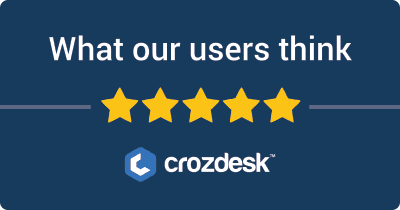
Introduction: Kissmetrics vs. Google Analytics
Both Kissmetrics and Google Analytics are prominent analytics tools used by businesses to track and analyze user behavior, yet they serve slightly different purposes. Kissmetrics focuses on providing insights into customer journey, segmentation, and conversion tracking, tailored to enhance user engagement and retention. In contrast, Google Analytics offers a broader range of web analytics capabilities, delivering detailed traffic reporting and user behavior analysis across websites and apps.
Users commonly consider these tools to understand their audience better and optimize their marketing strategies. The choice between them often depends on specific business needs, such as in-depth customer insights versus extensive traffic data.
Primary Comparison Aspects:
- Features: Evaluate each tool’s capabilities in tracking and reporting.
- Pricing: Compare subscription models and costs associated with each service.
- Ease of Use: Examine user interfaces and the learning curve for new users.
- Integrations: Consider compatibility with other marketing and data tools.
- Support and Resources: Analyze the level of customer support and available resources for users.
This comparison will assist users in determining which analytics tool best aligns with their business objectives.
Kissmetrics VS Google Analytics: Which tool is the most popular?
| Tool | Number of Reviews | Average Rating | Positive Reviews | Neutral Reviews | Negative Reviews |
|---|---|---|---|---|---|
| Kissmetrics | 20 | 4.55 | 19 | 0 | 1 |
| Google Analytics | 9 | 3.44 | 6 | 0 | 3 |
Kissmetrics is the most popular tool based on both the number of reviews and average user rating. It has received 20 reviews with a high average rating of 4.55, indicating strong user satisfaction. In contrast, Google Analytics is the least popular, with only 9 reviews and a lower average rating of 3.44, reflecting a higher proportion of negative feedback.


Kissmetrics and Google Analytics: Quick Comparison Overview
| Feature/Aspect | Ahrefs | SEMrush |
|---|---|---|
| Primary Features | – Site Explorer – Keyword Explorer – Backlink Checker – Content Explorer – Rank Tracker |
– Keyword Research – Site Audit – Position Tracking – Content Analyzer – Marketing Insights |
| Target Audience | – SEO professionals – Digital marketers – Agencies focusing on content marketing and backlink analysis |
– Digital marketers – SEO experts – Content marketers – Social media marketers and PPC specialists |
| Main Advantages | – Robust backlink analysis – Comprehensive keyword data – Intuitive user interface – Constantly updated index |
– All-in-one digital marketing tool – Extensive competitor analysis – Wide array of tools for SEO and PPC – Integrated social media management |
| Core Value Proposition | Focused on providing in-depth SEO insights, particularly strengths in backlink profiles and organic keyword rankings. Ideal for users prioritizing content strategy and link-building efforts. | Offers a holistic view of digital marketing, making it easier to manage all aspects of online presence through an extensive range of tools for SEO, PPC, and social media marketing. |
| Ideal Use Cases | – Conducting comprehensive link audits – Developing effective content strategies – Tracking backlinks and organic rankings – Keyword planning for SEO campaigns |
– Managing and optimizing PPC campaigns – Conducting competitive analysis for market positioning – Comprehensive content analytics and SEO tracking – Social media metrics and management |
Most liked vs most disliked features of Kissmetrics and Google Analytics
| Feature | Kissmetrics | Google Analytics |
|---|---|---|
| Most Liked Features | – Tracks user interactions effectively (likes, purchases, drop-offs). | – Robust tracking capabilities for understanding user interactions. |
| – Aids data-driven decisions on conversions and behavior analysis. | – Customizable reports tailored to business needs. | |
| – User-friendly and easy to navigate for report creation and analytics. | – Real-time data visualization for immediate decision-making. | |
| – Easy implementation via simple JavaScript code. | – Integration with other Google products enhances overall utility. | |
| – Exceptional customer support with demos and assistance. | – Valuable for running online businesses and strategizing operations. | |
| Most Disliked Features | – Aesthetic design of the admin tool is criticized. | – Page tagging limitations may cause inaccuracies in traffic measurement. |
| – Installation process can be time-consuming and complex for new users. | – Steep learning curve for interpreting statistics fully. | |
| – Difficulties in setting up team sharing impacts collaboration. | – May require additional services for accurate traffic measurement. | |
| – Pricing structure concerns suggest a need for lower-priced options. | – Tracking accuracy concerns due to blocking techniques or caching. | |
| – Users seek more advanced features for competitive edge. | – Complexity of advanced features may overwhelm less tech-savvy users. |
Key Features of Kissmetrics vs Google Analytics
Key Features of Kissmetrics and Google Analytics
Kissmetrics Features:
-
Customer Tracking:
- Benefit: Tracks individual users over time, capturing their interactions and behaviors with your website or product. This helps businesses understand customer journeys and improve retention.
- Unique Aspect: Focus on customer insights rather than page views, allowing businesses to make informed decisions based on real user behavior.
-
Cohort Analysis:
- Benefit: Enables businesses to analyze behavior patterns of groups of users that share common characteristics or experiences over time. This aids in understanding how different cohorts perform, helping to tailor marketing strategies.
- Unique Aspect: Kissmetrics provides in-depth cohort analysis that tracks user engagement across different periods, which is less emphasized in traditional analytics tools.
-
Funnels:
- Benefit: Visualizes conversion paths, helping users identify where customers drop off in the buying process. This is critical for optimizing funnels and improving conversion rates.
- Unique Aspect: Offers detailed funnel analysis that can segment users by attributes, offering a nuanced view of what may be influencing drop-offs.
-
Retention Reports:
- Benefit: Helps measure user retention over time, enabling businesses to refine retention strategies effectively.
- Unique Aspect: Focuses on trends of returning customers, which can be crucial for subscription-based models or SaaS products.
-
A/B Testing:
- Benefit: Facilitates the testing of different versions of web pages or elements to determine what leads to better user engagement and conversions.
- Unique Aspect: Kissmetrics integrates A/B testing with user behavior tracking, allowing for informed decision-making based on actual user responses rather than speculation.
Google Analytics Features:
-
Website Performance Tracking:
- Benefit: Monitors how well your website performs, including load times, which can affect user experience and SEO. This offers actionable insights to enhance user experience.
- Unique Aspect: Comprehensive reporting on website performance metrics combined with traffic data, providing a holistic view of site efficiency.
-
Real-Time Data:
- Benefit: Provides insights into traffic as it happens, allowing businesses to understand immediate user behavior and make timely adjustments or decisions.
- Unique Aspect: Real-time reporting is very detailed, offering insights such as current active users, their locations, and the actions they are taking on the site.
-
Goal Tracking:
- Benefit: Users can set specific goals (like sales, downloads, or sign-ups) and track conversion rates against these goals, helping assess the effectiveness of marketing efforts and website performance.
- Unique Aspect: Offers customization of goals and events, allowing for tailored tracking suited to specific business objectives.
-
E-commerce Tracking:
- Benefit: Specially designed for online businesses, it provides insights into sales performance including product performance, transaction details, and more.
- Unique Aspect: Offers enhanced e-commerce capabilities that are not just transaction-focused but also delve into user behavior leading to purchases.
-
Integration with Google Ads and Other Tools:
- Benefit: Seamlessly integrates with Google Ads and other Google services, enabling unified data analysis for better advertising decisions.
- Unique Aspect: The extensive ecosystem provided by Google, which allows for streamlined cross-platform tracking and analysis.
Summary of Unique Aspects:
- Kissmetrics is heavily oriented towards customer lifecycle analysis and individual behavior, making it suitable for businesses focused on detailed user engagement and retention strategies.
- Google Analytics, in contrast, excels with its real-time capabilities, comprehensive tracking of website performance, and integration with various Google services, making it ideal for businesses requiring a broad analysis of site performance and visitor metrics.
Choosing between these tools often depends on a business’s specific needs—whether it values detailed customer tracking or robust site performance analytics.
Kissmetrics vs Google Analytics Pricing Comparison
| Feature | Kissmetrics | Google Analytics |
|---|---|---|
| Free Tier | No | Yes (Google Analytics 4 is free) |
| Monthly Subscription | Starting at $299/month (Basic Plan) | Free for most features |
| Annual Subscription | Pricing varies, typically discounted | Free for most features |
| Basic Plan (Kissmetrics) | $299/month (Billed Annually at $2400) | Free with Google Analytics 4 |
| Growth Plan (Kissmetrics) | $499/month (Billed Annually at $4200) | N/A |
| Enterprise Plan | Custom Pricing | Premium option available (Google Analytics 360) |
| Data Cap | 100M events/month for Basic | Limited data sampling in free version |
| Main Features | Customer behavior tracking, funnel reports | Basic website analytics, user tracking |
| Conversion Rate Tracking | Yes | Limited to standard metrics |
| Special Features | A/B testing, cohort analysis | Real-time data, audience insights |
| Integration Options | Integrates with various tools like Slack, Mailchimp | Wide array of integrations (e.g., Google Ads, Search Console) |
| Free Trial | 14-day free trial available | No free trial, but the free tier is comprehensive |
Key Differences:
-
Cost Structure: Kissmetrics requires a paid subscription from the start, while Google Analytics offers a full-featured free version, making it accessible for startups and small businesses.
-
User Experience and Target Audience: Kissmetrics targets growth-focused businesses looking for in-depth customer analytics, while Google Analytics is suitable for a broader audience needing basic web traffic insights.
-
Advanced Features: Kissmetrics provides specific tools for customer behavior analysis and A/B testing as part of their paid plans, delivering more specialized insights compared to the general web analytics services of Google.
-
Scaling and Custom Solutions: For larger businesses needing advanced features, both platforms offer enterprise options, but Google adapts with a comprehensive suite through Google Analytics 360, whereas Kissmetrics offers a custom solution.
-
Data Processing Limits: With Kissmetrics, tiers are defined by event tracking limits, while Google Analytics limits some reports when high traffic is encountered in its free version.
-
Trial and Flexibility: Kissmetrics offers a short trial to test the platform, providing some flexibility. Google Analytics operates on a freemium model, allowing users to explore basic features indefinitely.
Support Options Comparison: Kissmetrics vs Google Analytics
| Support Options | Kissmetrics | Google Analytics |
|---|---|---|
| Live Chat | Available for paid plans only | Not available |
| Phone Support | Not available | Not available |
| Documentation | Comprehensive knowledge base available | Extensive documentation, including FAQs |
| Webinars | Regular webinars offered | Webinars and online courses available |
| Tutorials | Video tutorials available | Provides tutorials and learning paths |
| Community Support | Limited community engagement | Strong community forums supported |
Kissmetrics offers live chat support solely for its paid plans, while Google Analytics does not provide live chat or phone support options. Regarding documentation, both platforms feature extensive resources, but Google Analytics offers more comprehensive coverage, including FAQs. Webinars are a part of both offerings, with Kissmetrics providing regular sessions and Google Analytics featuring a wider array of online courses. Both platforms include tutorial materials, but Google Analytics has a more structured approach with its learning paths. Lastly, community support is comparatively stronger for Google Analytics.
Unique Features of Kissmetrics Vs Google Analytics
| Feature | Kissmetrics Unique Features | Google Analytics Unique Features | Added Value and Decision Factors |
|---|---|---|---|
| Customer Journey Tracking | Advanced customer journey tracking allows businesses to see how individual users interact with their site over time. | Enhanced eCommerce tracking with comprehensive reporting. | Provides insights into multi-touch attribution and funnels, critical for understanding customer behavior and optimizing conversion strategies. |
| Cohort Analysis | Cohort analysis focused on product usage and retention metrics. | Cohort analysis with user segmented data based on activity. | Helps businesses understand customer retention and long-term engagement, essential for improving product loyalty and reducing churn. |
| User-Based Metrics | User-level metrics that emphasize individual behaviors and events. | Session and aggregate-level metrics common in other tools. | Enables a deeper understanding of customer interactions, paving the way for more personalized marketing strategies. |
| Behavioral Tracking | Real-time behavioral data to identify user actions and engagement levels. | Primarily offers session-based data aggregation. | Facilitates immediate responsiveness to user behavior, allowing for timely optimization of marketing efforts and site experience. |
| Funnel Reporting | Comprehensive funnel reporting to visualize user drop-off points. | Funnel visualization tools available, but with less user focus. | Identifies specific areas in the conversion process that can be improved, enhancing efficiency in customer journeys. |
| Retargeting Capabilities | Built-in retargeting features to re-engage users who have interacted but not converted. | Tag-based retargeting capabilities through Google Ads. | Encourages conversion by targeting users based on prior interactions and behaviors, maximizing marketing spend effectiveness. |
| Emphasis on Segmentation | Advanced segmentation allowing businesses to create tailored messages and marketing strategies for precise user groups. | Segmentation capabilities exist but are often less granular. | Fosters precise targeting and personalization, leading to improved engagement rates and ROI on marketing campaigns. |
Kissmetrics and Google Analytics each present unique features that offer significant advantages over standard analytical tools. Kissmetrics provides a stronger emphasis on user-level tracking and retention, essential for businesses focused on long-term engagement, while Google Analytics excels at robust eCommerce tracking and integration with advertising solutions. Both tools, through their specialized features, enable brands to leverage data in ways that drive strategic marketing decisions and enhance overall customer experience, ultimately affecting business growth and success.


